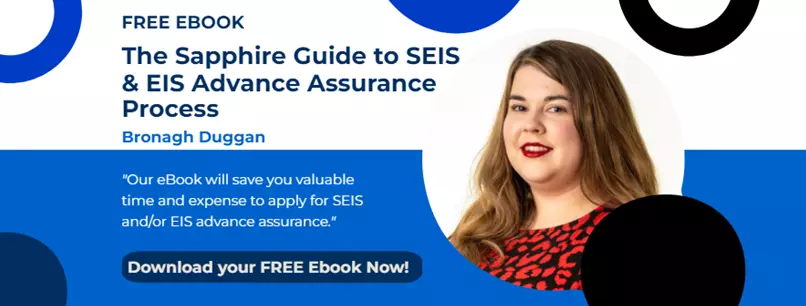With a multitude of investment strategies available, understanding the nuances of various corporate structures can be invaluable to both investors and entrepreneurs. In UK venture capital, the Limited Partnership/General Partnership (LP/GP) structure and the Enterprise Investment Scheme (EIS) are two predominant investment vehicles. I thought it would be useful to elucidate these structures' intricacies and provide a comprehensive high level comparison, focusing on the specific legislative aspects and the financial investment dynamics of both models.
Dissecting the LP/GP Fund Structure
The LP/GP structure serves as a backbone for most private equity and venture capital funds, boasting wide applicability across different sectors and investment strategies. It permits investments to be made into a diverse range of companies, from nascent startups and growth-stage ventures to established industry giants.
Limited Partners (LPs) are often referred to as silent investors, as they are primarily responsible for furnishing capital for private equity funds. The Limited Partnerships Act 1907 (LPA) stipulates in Section 6(1) that LPs do not participate in the fund's management, nor can they bind the firm legally. Their role is explicitly defined, and their liability is capped to the amount of their contribution.
Section 8(2) of the Act designates a Limited Partnership Fund (LP Fund) as a private fund limited partnership. An LP Fund is a collective investment vehicle established under the Limited Partnerships Act 1907. It offers a shield to LPs against unlimited liability, ensuring their risk remains proportional to their investment.
General Partners (GPs), on the other hand, are the decision-makers with the authority to manage the fund. They bear the legal liability for the firm's debts and obligations, as per Section 4(2) of the LPA. To mitigate this exposure, the investment management business, or 'fund house,' usually forms a limited liability entity like a company to serve as a general partner (a GP Co).
During a fund's early life stages, profits are scarce and are generally realised in later years when assets are sold. As such, investors or the fund vehicle typically advance the GP money from the fund’s capital reserves to cover the management fees. This advance is often referred to as an 'advance profit share,' safeguarding the GP's financial interest in the fund's infancy stages.
The Enterprise Investment Scheme (EIS): An Overview
The EIS is an investment scheme that serves as a lifeline for businesses seeking capital infusion. The maximum limit a company can raise through EIS is £12 million, but the ceiling is £5 million per year. For EIS companies that qualify as "Knowledge Intensive Companies", the maximum per year is £20 million in total, but the ceiling is £10 million per year. Eligibility for the EIS requires a company to have no more than £15 million in gross assets, fewer than 250 employees, and its first commercial sale should be no more than seven years ago. A significant feature of the EIS is its provision for 30% income tax relief, as well as saving investors from paying Capital Gains Tax immediately on using the gain from an asset's sale to invest in a qualifying EIS company.
For earlier stage companies raising their first round of financing, the UK government offers the Seed Enterprise Investment Scheme, referred to as SEIS. Eligibility for SEIS requires the company to have no more than £350,000 in gross assets and its first commercial sale to be no more than two years ago. SEIS is more generous in its tax relief offering, providing for 50% income tax relief. However, the investment limits are significantly lower, currently at £250,000 (this is the new limit which recently received Royal Assent).
For more information with relation to the tax reliefs offered by EIS please please visit our website https://www.sapphirecapitalpartners.co.uk/eis-investment. We also have a free e-Book available to download from our website.
EIS relief eligibility is contingent upon several factors, including the 'risk-to-capital condition' outlined in Section 157A. This condition necessitates the issuing company to demonstrate a significant risk of capital loss greater than the net investment return. The investor must also qualify and meet all general requirements, required by HMRC. With EIS, investors can claim relief in the tax year of the investment or the previous tax year.
However, the relief is limited to the amount of Income Tax due in the UK, with no provision for carrying forward unused Income Tax relief to future years.
A Comparative Analysis: LP/GP fund vs. EIS fund
While both LP/GP and EIS fund structures serve the broader goal of investment and capital growth, they cater to different needs and suit varying investment strategies. The LP/GP model presents an attractive proposition for those seeking to invest in either private equity or venture capital funds across various sectors. It's built around shared liability and a hands-off approach for LPs, making it suitable for investors looking for substantial potential returns without the day-to-day management responsibilities. There are no governmental restrictions on how much money an investor (LP) can deploy or how long the investment is to be held by the fund, but there are investment constraints / criteria set by the GP in order for the fund to abide by its thematic investment approach. The main investor type in LP/GPs are institutions, as they are not interested in income tax reliefs. This makes the average investor placement amount higher than in EIS funds.
The EIS fund structure, in contrast, is considered to be a managed discretionary portfolio. EIS funds are primarily for businesses looking to raise capital from investors seeking to invest but also to benefit from substantial income tax reliefs. It is an effective way for the UK government to intervene and help promote the flow of money into start ups and early stage companies, which drive innovation. EIS provides an excellent avenue for investors willing to embrace higher risk for potentially higher returns, with the added incentive of tax benefits. EIS funds are strictly for patient capital investment - which is indicative of the long-term nature of these investments; since EIS funds typically invest in early-stage, high-risk companies, it is important to understand that businesses typically need several years to grow and develop.
Conclusion
Investing requires a thorough understanding of the various structures, their legislative backdrop, and the dynamics of financial investment they offer. Both the LP/GP structure and the EIS present distinct advantages, unique regulatory environments, and different risk-reward profiles. They also have similarities, such as their fee structures and they are required to be managed by an FCA authorised investment management firm like Sapphire Capital Partners LLP.
In navigating these waters for inexperienced investors (i.e., anyone who is not a professional investor), it is essential to consult a financial advisor to ensure that your chosen investment path aligns with your financial goals, risk tolerance, and long-term strategies. As with all investments, understanding the intricate details of these schemes and their legislative underpinnings is key to making informed decisions and achieving financial success.

